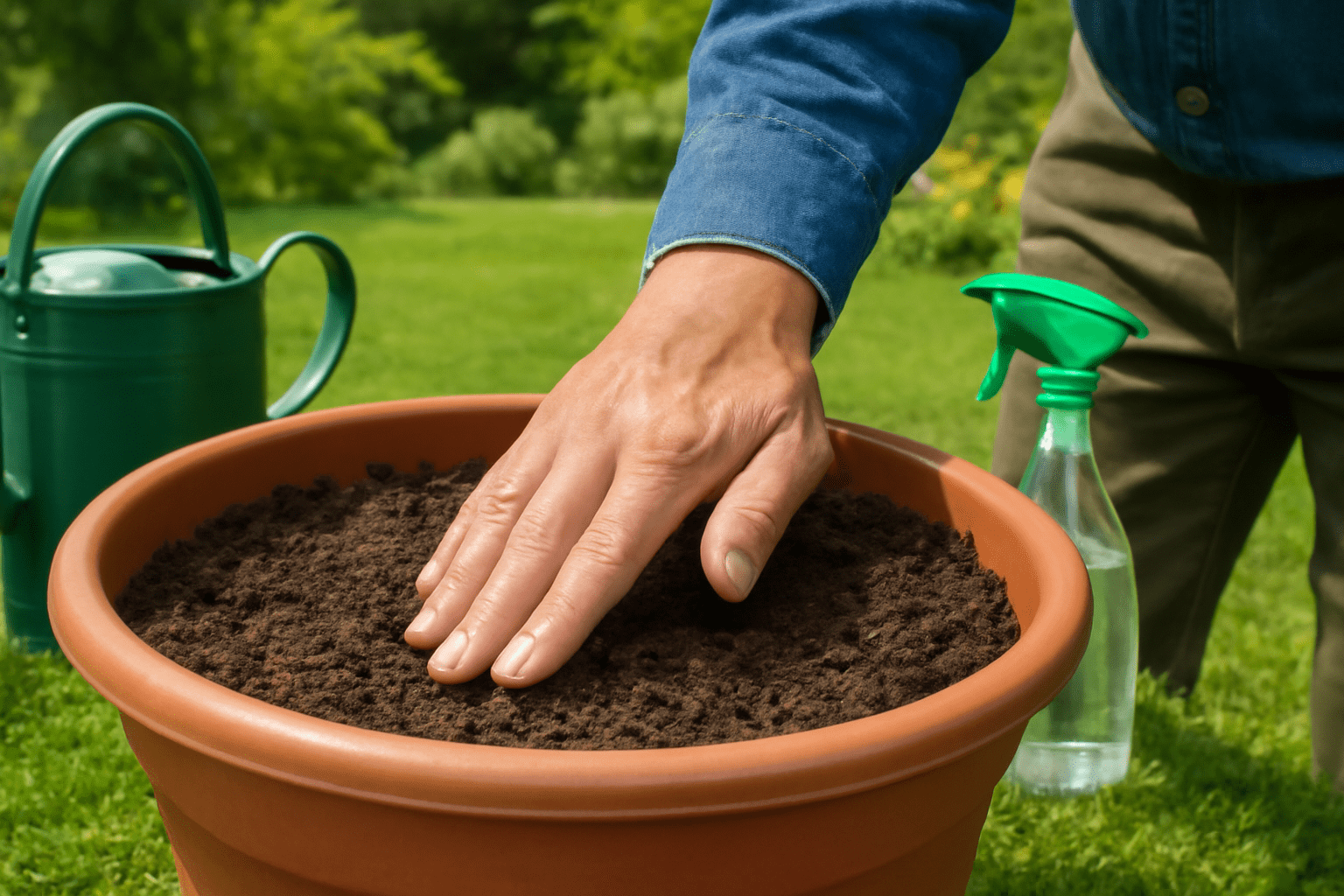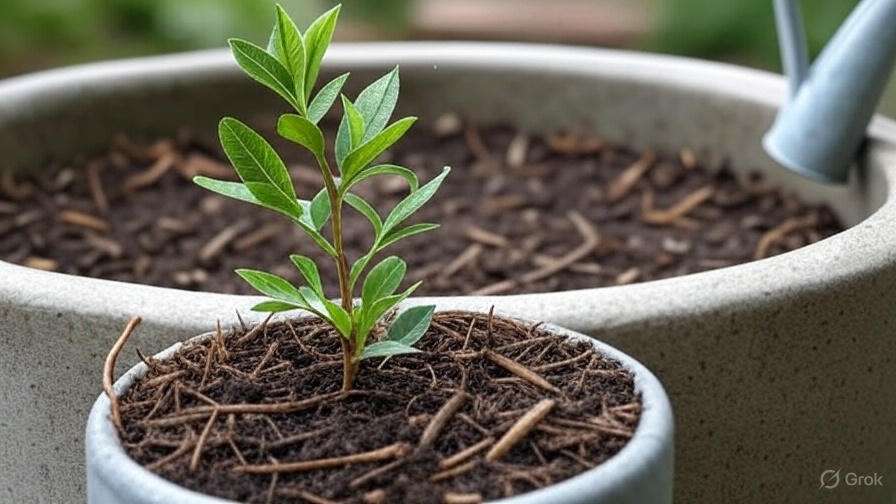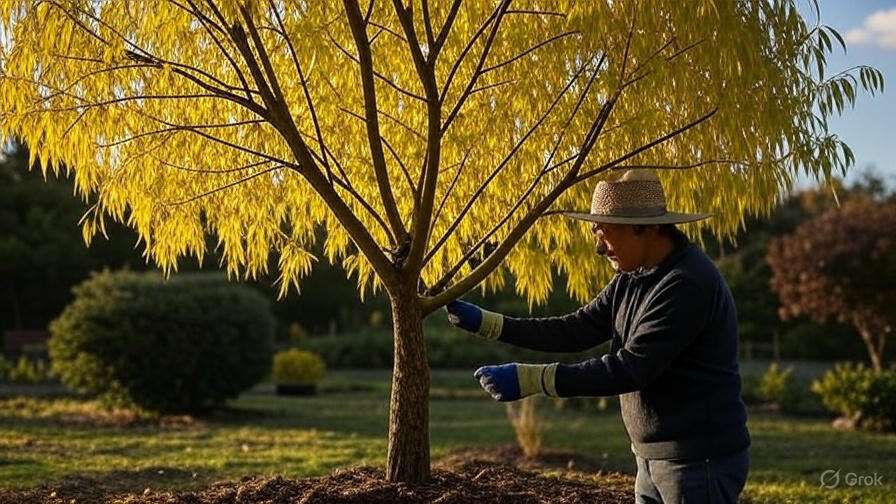
How to Grow Willow Tree Seeds: A Step-by-Step Guide for Success
Growing willow trees from seeds can be a rewarding experience, but many gardeners struggle with the best techniques for success. 
In this step-by-step guide, we’ll walk you through the entire process of growing willow tree seeds—from sowing to transplanting—so you can grow your very own willow tree with confidence. Whether you’re a beginner or seasoned gardener, these expert tips will set you up for success and help you avoid common mistakes. Keep reading to discover how to turn your willow tree seeds into a thriving tree!
Table of Contents
ToggleWhat You Need to Know Before Growing Willow Tree Seeds
Before you dive into growing willow tree seeds, there are a few key things to keep in mind to set you up for success. Whether you’re an experienced gardener or a complete beginner, understanding these basic factors will help you achieve the best results.
1. Choose the Right Willow Variety
Willow trees come in several varieties, and not all of them are suited for your specific environment. Consider the climate and soil in your area before picking a variety. Some species, like the weeping willow, thrive in wet conditions, while others prefer drier soil. Do a bit of research to match the right type to your region for the best growth.
2. Understand the Germination Process
Willow seeds are known for their rapid germination. However, they need to be fresh to sprout effectively. Collect seeds in the fall, or if you buy them, make sure they’re from a reputable source. Keep in mind that willows tend to grow quickly once they start, but the process can take time and patience.
3. Prepare the Soil
Willows are not picky about soil, but they do prefer moist, well-drained ground. A slightly acidic to neutral pH is ideal. You can improve your soil’s quality by adding organic matter like compost, which will help retain moisture and support strong root development.
4. Timing is Key
Willow tree seeds should be sown in early spring or late winter, depending on your region. It’s important to plant them at the right time, as this ensures the young plants have the best chance of surviving through the seasons. Willow seeds should not be planted too deep—just a light covering of soil is all they need.
5. Consider Space Requirements
Willow trees can grow quite large, with some varieties reaching up to 30 feet in height. When planting, give your trees enough space to thrive. Consider how large they’ll eventually get and plant them away from buildings, power lines, or other trees that could interfere with their growth.
6. Watering and Maintenance
Young willow trees need plenty of water to establish strong roots. Keep the soil consistently moist, especially during the first few months. While willows love water, make sure the area doesn’t become waterlogged. Regular pruning will help the tree stay healthy, but be mindful not to cut back too much, as willows rely on their branches for photosynthesis.
By understanding these key aspects before you start planting willow tree seeds, you’re setting yourself up for success. Happy planting!
How to Prepare Willow Tree Seeds for Planting
Getting your willow tree seeds ready for planting is a crucial step for ensuring healthy growth. Here’s a simple, beginner-friendly guide to help you prepare the seeds properly:
- Collect Fresh Willow Seeds
Start by harvesting seeds from a mature willow tree. Willow trees produce fluffy seed heads in the spring, usually in May or June. Choose seeds that are fully matured but not yet fallen off the tree. This will give you the best chance for germination.
- Stratify the Seeds
Willow seeds benefit from a cold stratification process, which mimics the natural winter conditions. Place the seeds in a damp paper towel or sand, and store them in a plastic bag in the refrigerator for about 30 days. This helps break the seed dormancy and prepares them for sprouting. - Clean the Seeds
After stratification, gently clean your seeds to remove any debris or fluff. This ensures they are ready for planting without excess material that might hinder germination. A fine mesh strainer or simply rinsing them under cool water can do the trick. - Prepare the Planting Tray or Pots
Fill your pots or a seed tray with well-draining potting soil. Willow seeds thrive in slightly acidic, moist conditions, so choose a soil mix that retains moisture but doesn’t get soggy. You can also add perlite to improve drainage. - Plant the Seeds
Scatter the seeds lightly on the surface of the soil. Willow seeds are small, so don’t bury them too deep—just press them gently into the soil. Mist the surface with water to ensure the soil stays moist. You can cover the tray or pots with plastic wrap to create a greenhouse effect, keeping the seeds warm and humid. - Place in a Warm Spot
Place your planting tray or pots in a warm location with indirect sunlight. A temperature between 65°F and 75°F (18°C to 24°C) is ideal for germination. Keep the soil consistently moist, but not waterlogged. With the right care, your willow tree seeds should start sprouting in about 1 to 2 weeks.
By following these simple steps, you’ll give your willow tree seeds the best chance for a successful start!
The Best Soil and Location for Planting Willow Tree Seeds
When it comes to planting willow tree seeds, choosing the right soil and location is crucial for their success. Here’s what you need to know to get it right:
1. Soil Requirements 
Willow trees thrive in moist, well-draining soil. A loamy or sandy loam soil is ideal because it allows for proper root expansion while retaining enough moisture. Ensure that the soil is slightly acidic to neutral (pH 6.0 to 7.0), as willows prefer this range for optimal growth.
- Moisture is Key: Willows are water-loving trees, so consistent moisture is important. Avoid heavy clay soils that can become waterlogged, as this may lead to root rot. If your soil is heavy or compacted, consider improving drainage by adding organic matter like compost.
- Soil Preparation: Before planting, loosen the soil to a depth of about 12–18 inches. This will allow the roots to establish themselves properly and access the nutrients they need to grow strong.

2. Location Selection 
Choosing the right spot for planting willow seeds can make all the difference in their success.
- Full Sunlight: Willows prefer full sunlight, so select a location that gets at least 6 hours of direct sun per day. This will help them grow vigorously and maintain healthy foliage.
- Near Water: Willow trees naturally grow near water sources such as rivers, lakes, or wetlands. Planting them in areas where they can access plenty of moisture, such as near ponds or streams, will mimic their natural habitat and support their growth.
- Space to Grow: Ensure you plant your willow tree in a spacious area with plenty of room for its branches to spread. While young, willows are compact, but they grow rapidly and can become large trees over time.
3. Avoid Windy Areas 
Willows are susceptible to wind damage, especially when they are young. Choose a sheltered area where strong winds won’t cause harm to the saplings. If your location is windy, consider planting a natural windbreak or choosing a more protected spot.
By selecting the right soil and location, you provide your willow tree seeds with the best environment to thrive. Keep these tips in mind, and you’ll soon have a healthy, growing willow tree that flourishes year after year!
Step-by-Step Guide to Planting Willow Tree Seeds
Planting willow tree seeds is an easy and rewarding process when done correctly. Follow these simple steps to get started:
1. Gather Your Materials 
Before you start, make sure you have the following:
- Willow tree seeds (also known as willow catkins)
- A small container or tray for sowing
- Well-draining soil (potting mix works well)
- A spray bottle or gentle watering can
2. Prepare the Soil 
Willows thrive in moist, well-drained soil. Fill your container with soil, leaving about an inch from the top. Gently tap it down to remove air pockets, but don’t compact it too much. A light, fluffy soil base is perfect for seed germination.
3. Soak the Seeds 
Soak the willow seeds in water for 24 hours before planting. This helps soften the seed coat and improves the chances of germination. After soaking, drain the excess water.

4. Sow the Seeds 
Sprinkle the soaked seeds evenly on top of the soil. Willows have very fine seeds, so don’t worry about burying them deep. Simply press them lightly into the soil surface using your fingers or a flat tool. The seeds need light to germinate, so avoid covering them with too much soil.
5. Water Gently 
After sowing the seeds, lightly water the soil. A spray bottle works best for this, as it won’t disturb the seeds. Keep the soil moist, but not soggy.
6. Place in a Warm, Sunny Spot 
Willow seeds need warmth and light to germinate. Place your container in a spot where it gets plenty of indirect sunlight, such as a windowsill. The ideal temperature for germination is around 65°F (18°C). You should start seeing small shoots within a few weeks!
7. Maintain Moisture 
Check the soil regularly to ensure it remains moist. If the soil feels dry, mist the surface lightly. Be careful not to overwater, as this can cause the seeds to rot.
8. Transplant Once Ready 
When the seedlings grow strong enough to handle, you can transplant them into larger pots or directly into your garden. Choose a location with full sunlight and plenty of space to allow the willow to grow tall and healthy.
Final Tips:
- Willow trees love water, so plant them near a water source if possible.
- If you’re planting in a garden, ensure the spot is not too windy as young willows are delicate.
- Always check your local climate to make sure willow trees are suitable for your area before planting.
With this guide, you’re well on your way to successfully growing your own willow tree from seed!
How to Care for Willow Tree Seedlings
Caring for willow tree seedlings is crucial for their healthy growth. These fast-growing trees thrive when given the right environment and attention. Here are some essential tips to ensure your willow seedlings flourish:
1. Choose the Right Location 
Willows love sunlight, so choose a spot that receives full sun for at least six hours a day. Ensure the soil is well-draining and slightly acidic, but don’t worry too much about perfect soil—willows are adaptable and can tolerate various conditions.

2. Watering Needs 
Willows thrive in moist conditions. Water your seedlings regularly, especially during dry spells. Keep the soil consistently moist, but avoid waterlogging, as this can lead to root rot. If you’re growing them near a water source, the natural humidity will help!
3. Mulching for Moisture Retention 
Apply a 2-3 inch layer of mulch around the base of your seedlings. Mulch helps retain moisture, suppresses weeds, and keeps the roots cool during hot weather. Use organic mulch like wood chips, leaves, or grass clippings.
4. Fertilizing Your Seedlings 
Feed your willow seedlings with a balanced fertilizer during the growing season. A slow-release fertilizer with equal parts nitrogen, phosphorus, and potassium is ideal. Apply it in early spring before new growth starts to give them a boost.
5. Pruning for Shape and Health 
Though willows are low-maintenance, some light pruning will encourage a strong structure. Remove any dead or damaged branches to promote healthy growth. Avoid heavy pruning until the tree matures, as willows grow best when they have a natural shape.
6. Protecting from Pests and Diseases 
Willows are generally resistant to pests, but it’s essential to keep an eye out for aphids or fungal infections. If you spot any pests, use organic insecticidal soap or neem oil. Regularly check for any signs of mold or mildew, and prune affected areas to keep the tree healthy.
By following these simple steps, your willow tree seedlings will grow into strong, beautiful trees that can thrive in a variety of landscapes. Happy planting!
Transplanting Your Willow Seedlings 
Transplanting willow seedlings can be a rewarding experience, but it requires careful timing and preparation. Follow these simple steps to give your seedlings the best chance for success in their new home.
1. Choose the Right Time 
The best time to transplant willow seedlings is during early spring or fall when the weather is cooler and the soil is moist. This gives the seedlings a chance to establish their roots before the heat of summer or the cold of winter sets in.
2. Prepare the Soil 
Before transplanting, ensure that the soil is loose, well-drained, and slightly acidic. Willows thrive in moist environments, so it’s important that the soil retains some water but doesn’t stay soggy. Mix in organic matter like compost to improve soil structure and fertility.

3. Dig the Hole 
Dig a hole that’s at least 2-3 times the size of the seedling’s root ball. This will give the roots plenty of room to spread and establish themselves. The hole should be deep enough to accommodate the roots without bending or crowding them.
4. Carefully Remove the Seedling 
Gently lift the willow seedling from its container or seed tray, taking care not to damage the roots. If the seedling is in a pot, lightly tap the sides to loosen the root ball. If it’s grown in a tray, carefully separate the seedlings to avoid root damage.
5. Place the Seedling in the Hole 
Position the seedling in the hole at the same depth it was growing before. The roots should spread out comfortably without being crowded. Fill the hole with soil and gently tamp it down to eliminate air pockets.
6. Water Immediately 
After transplanting, water the seedling thoroughly to help settle the soil and ensure the roots make good contact with the earth. Keep the soil consistently moist for the first few weeks while the seedling adjusts to its new environment.
7. Mulch to Retain Moisture 
Apply a layer of mulch around the base of the seedling to help retain moisture and keep the soil temperature stable. Be sure to leave a small gap around the seedling’s stem to prevent rot.
8. Monitor and Maintain 
Check the seedlings regularly for signs of stress, like wilting or yellowing leaves. If necessary, stake the seedlings to provide extra support as they grow. Continue watering as needed, especially during dry spells, but avoid over-watering.
By following these simple steps, you’ll ensure your willow seedlings have the best start in their new home. Transplanting can be a bit of work, but with the right care, your willows will thrive and grow strong!
Common Challenges and How to Overcome Them
Growing willow tree seeds can be a rewarding experience, but it’s not without its challenges. Here are some common hurdles you might face and practical solutions to help you succeed:
1. Low Germination Rate
Willow tree seeds can sometimes have a low germination rate, which can be frustrating for beginners. To increase your chances of success, make sure you’re using fresh seeds. Willow seeds can be tricky, so pre-soaking them in water for 24 hours before planting can help soften the seed coat and encourage sprouting.

2. Poor Soil Conditions
Willows thrive in moist, well-drained soil. If your soil is too dry or compact, the seeds may not sprout. To improve soil quality, mix in organic compost or peat moss to enhance moisture retention.
3. Inconsistent Watering
Watering your willow tree seeds is crucial, but it can be tricky to get it right. Over-watering can drown the seeds, while under-watering can lead to dry, weak sprouts. Keep the soil consistently moist but not waterlogged, and always check the moisture level by touching the soil. A good rule of thumb is to water when the top inch of soil feels dry to the touch.
4. Temperature Fluctuations
Willow seeds prefer a steady temperature to germinate. If the temperature fluctuates too much, it can delay or prevent germination. Try to keep your planting area in a stable environment, ideally between 50-70°F (10-21°C). If you’re planting indoors, consider using a heat mat to maintain a consistent temperature.
5. Pests and Disease
Like all plants, willows are susceptible to pests and diseases, which can stunt growth or kill seedlings. Protect your seeds by covering them with a fine mesh or netting to keep pests at bay. Additionally, keep an eye out for fungal growth. If you notice any, gently remove affected areas and apply an organic fungicide if needed.
By staying vigilant and addressing these challenges with the right techniques, you’ll set yourself up for success in growing healthy willow trees from seed. Happy planting!
Conclusion
Growing willow tree seeds is a fulfilling and rewarding experience, especially when you follow the right steps for germination, care, and transplantation. By ensuring proper watering, soil, and sunlight, your willow tree seeds will grow into strong, vibrant trees that enhance your garden or landscape.

With the expert tips shared in this guide, you now have all the tools to successfully grow your willow trees from seed. Whether you’re a seasoned gardener or just starting out, these techniques will help you nurture your trees and ensure their longevity. Start planting today, and enjoy the beauty of your thriving willow trees for years to come!
If you have any questions or need additional advice, don’t hesitate to leave a comment below—we’re here to help you on your gardening journey!
Frequently Asked Questions(FAQ)
How long does it take for willow tree seeds to germinate?
Willow tree seeds typically germinate within 7 to 14 days, provided the conditions are right. Ensuring moist soil and proper temperature (around 65-70°F or 18-21°C) helps speed up the germination process.
Do willow tree seeds need stratification before planting?
Willow tree seeds don’t require a cold stratification process like some other tree species. However, soaking them in water for 12-24 hours before planting can improve their germination rate.
Can I grow willow tree seeds indoors?
Yes, you can start willow tree seeds indoors in containers. Use a well-draining potting mix, and make sure the seeds get plenty of sunlight, ideally 6-8 hours a day, for the best growth.
What’s the best time of year to plant willow tree seeds?
The best time to plant willow tree seeds is in early spring when the temperatures are mild. This allows the seeds to sprout as the weather warms, and the trees have time to establish roots before the heat of summer.
How much sunlight do willow tree seedlings need?
Willow tree seedlings need full sunlight to thrive. Aim for at least 6 hours of direct sunlight per day, especially during the early stages of growth, to encourage strong, healthy development.
How deep should I plant willow tree seeds?
Plant willow tree seeds about 1/4 to 1/2 inch deep in the soil. Gently press the soil down after planting to ensure good contact between the seed and the soil for better germination.
What type of soil is best for planting willow tree seeds?
Willow trees prefer moist, well-draining soil with a slightly acidic to neutral pH. Loamy or sandy soils work best, as they provide adequate drainage and prevent water from collecting around the roots.
Why are my willow tree seeds not germinating?
If your willow tree seeds aren’t germinating, it could be due to too dry soil, low temperatures, or insufficient sunlight. Ensure you are keeping the soil consistently moist, maintain ideal temperature levels, and provide enough light for the seeds to sprout.

